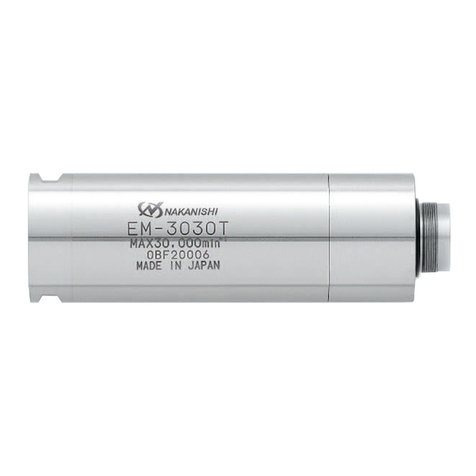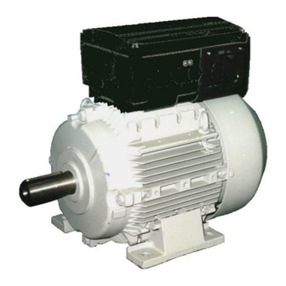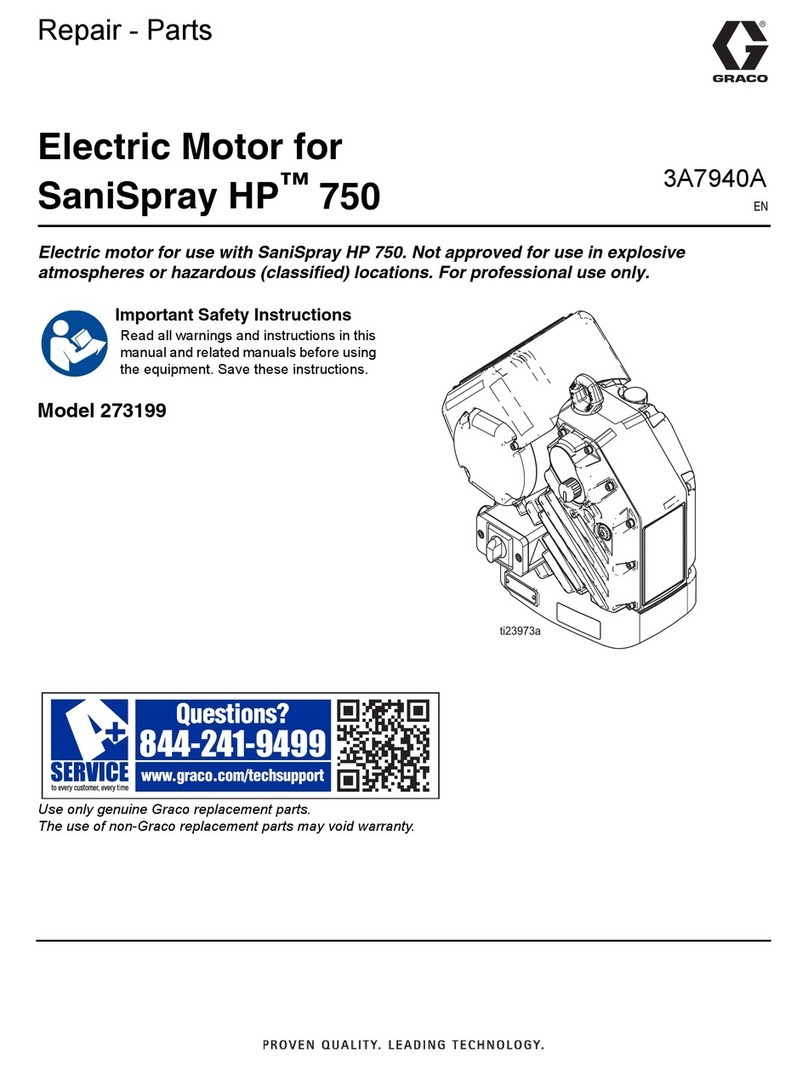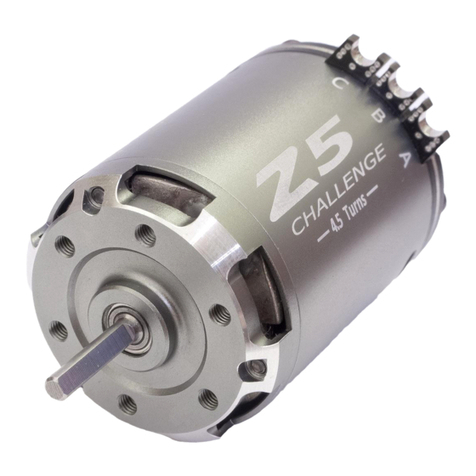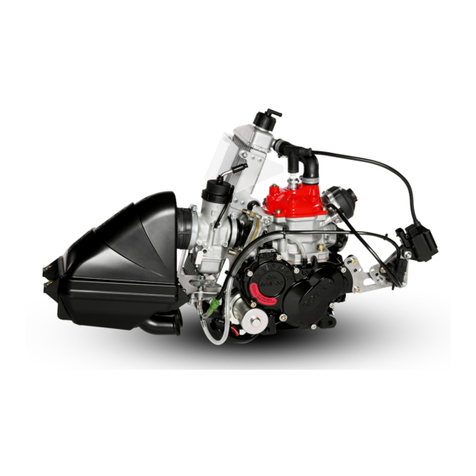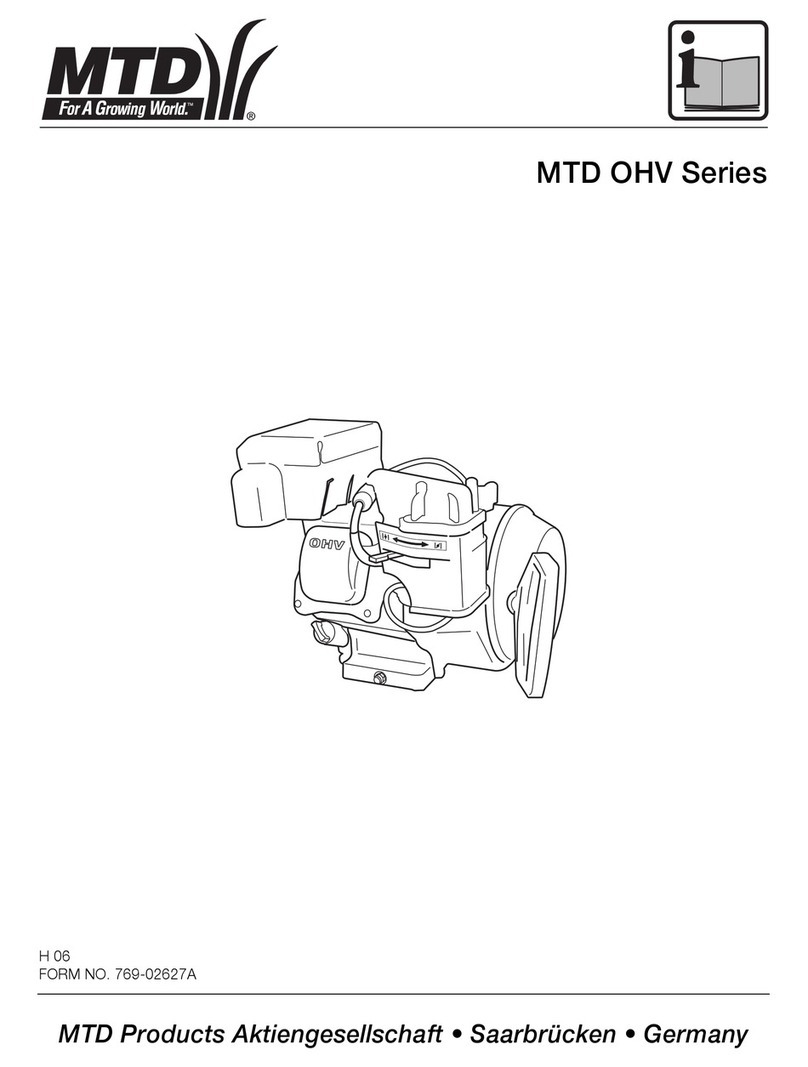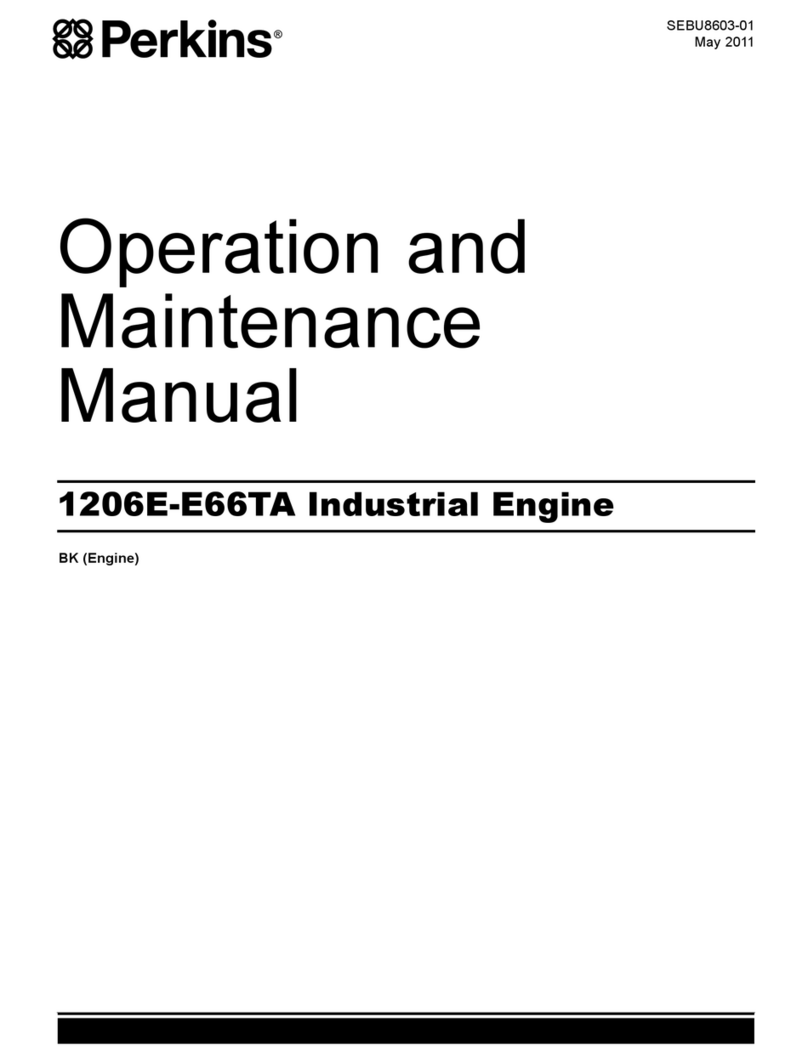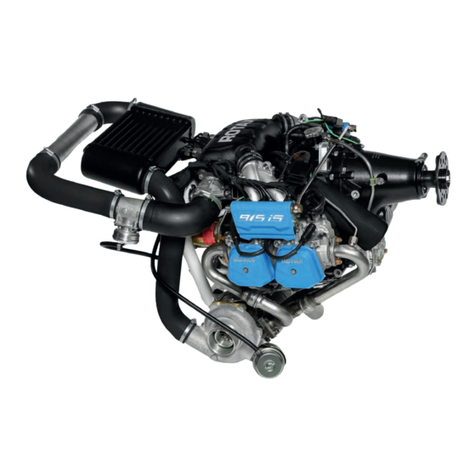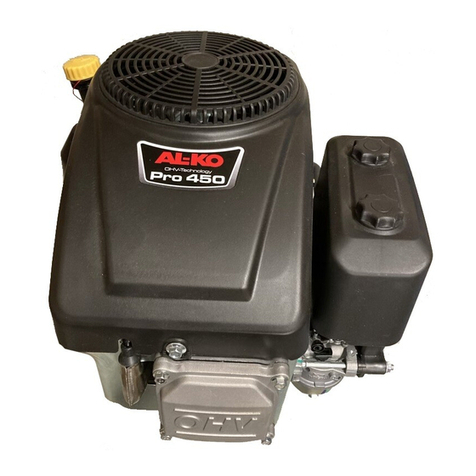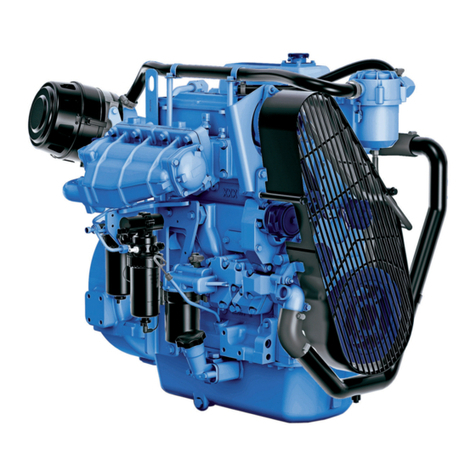King Canada KCG-65 User manual

KING CANADA
GASOLINE ENGINES
INSTRUCTION MANUAL
COPYRIGHT ©2011ALL RIGHTS RESERVED BY KING CANADA TOOLS INC.
Read this manual. Do not attempt to operate engine until you have read and understood the safety,
operation, and maintenance instructions in this manual.
MODEL: KCG-65
(6.5 HP)
MODEL: KCG-130
(13 HP)

WARRANTY & SERVICE
INFORMATION
1-YEAR
LIMITED WARRANTY
FOR 6.5 HP OR 13 HP ENGINE
KING CANADA TOOLS
OFFERS A 1-YEAR LIMITED WARRANTY
FOR NON-COMMERCIAL USE.
BEFORE CALLING THE ABOVE TOLL-FREE NUMBER, PLEASE READ THIS MANUAL, SPECIFICALLY THE
SAFETY PRECAUTIONS, THE INSPECTION BEFORE OPERATION AND THE TROUBLESHOOTING GUIDE.
•DO NOT RETURN THE DEFECTIVE PRODUCT TOTHE RETAILER.
WARRANTY INFORMATION
PROOF OF PURCHASE
Please keep your dated proof of purchase for warranty and servicing purposes.
REPLACEMENT PARTS
Replacement parts for these engines are available at our authorized KING CANADA generator service centers across canada. For
servicing, call the above toll free number to get servicing instructions and be sure to have your proof of purchase if you are claiming
warranty work.
LIMITED TOOL WARRANTY
KING CANADA makes every effort to ensure that this product meets high quality and durability standards. KING CANADA warrants to
the original retail consumer a 1-year limited warranty as of the date the product was purchased at retail and that each product is free
from defects in materials.
THIS WARRANTY IS NOT TRANSFERABLE AND DOES NOT COVER
•Damage or liability caused by shipping, improper handling, improper installation, improper maintenance, improper modification, or the
use of accessories and/or attachments not specifically recommended.
•Repairs necessary because of operator abuse or negligence, or the failure to install, operate, maintain, and store
the product according to the instructions in the owner’s manual.
•Damage caused by cold, heat, rain, excessive humidity, corrosive environments and materials, or other contaminants.
•Expendable items that become worn during normal use such as fuel filters, air cleaners, spark plugs, and engine oil.
•Cosmetic defects that do not interfere with product functionality.
•Freight costs from customer to an authorized warranty service location.
•Repair and transportation costs of products or parts determined not to be defective.
•ANY INCIDENTAL, INDIRECT OR CONSEQUENTIAL LOSS, DAMAGE, OR EXPENSE THAT MAY RESULT FROM ANY DEFECT,
FAILURE OR MALFUNCTION OF THE PRODUCT.
•RETAIN THE ORIGINAL CASH REGISTER SALES RECEIPT AS PROOF OF PURCHASE FOR WARRANTY WORK.
KING CANADA shall in no event be liable for death, injuries to persons or property or for incidental, special or consequential damages
arising from the use of our products. Shipping and handling charges may apply. If a defect is found, KING CANADA will either repair or
replace the product.
KING CANADA TOOLS INC. DORVAL, QUEBEC, CANADA H9P 2Y4

BASIC SAFETY INFORMATION
EXHAUST FUMES ARE DANGEROUS
•Never operate the engine in a closed area or it may cause uncon-
sciensness and death within a short time. Operate in a well
ventilated area.
FUEL IS HIGHLY FLAMMABLE AND POISONOUS
•Always turn off the engine when refueling.
•Never refuel while smoking or in the vicinity of an open flame.
•When operating or transporting engine, be sure to keep it upright. If
it tilts, fuel may leak from the carburetor or fuel tank.
ENGINE AND MUFFLER MAY BE HOT
•Place the engine in an appropriate location, away from children and
pedestrians.
•Avoid placing any flammable materials near the exhaust outlet
during operation.
•Keep a 4ft. clearance from buildings or other equipment around the
engine to prevent overheating.
WARNING! The engine muffler will be very hot after use, avoid
touching the engine or muffler while they are still hot.
ELECTRIC SHOCK PREVENTION
•Never operate in rain or snow.
•Never touch the engine with wet hands or electric shock could occur.
FUEL
Make sure there is sufficient fuel in the tank.
SPECIFIC SAFETY INFORMATION
TAMPERING WITH FACTORY SET ENGINE SPEED SETTINGS.
Engine speed has been factory set to provide safe operation.
Tampering with the engine speed adjustment could result in over-
heating and could cause a fire. Never attempt to “speed-up” the
engine to obtain more performance.
ATTEMPTING TO FILL THE FUEL TANK WHILE THE ENGINE IS
RUNNING.
Gasoline and gasoline vapors can become ignited by coming in con-
tact with hot components such as the muffler, engine exhaust gases,
or from an electrical spark.
Turn engine offand allow it to cool before adding fuel to the tank.
Equip area of operation with a fire extinguisher certified to handle
gasoline or fuel fires.
SPARKS, FIRE, HOT OBJECTS
Cigarettes, sparks, fires, or other hot objects can cause gasoline or
gasoline vapors to ignite.
Add fuel to tank in well ventilated area. Make sure there are no
sources of ignition near the engine.
INADEQUATE VENTILATION
Materials placed against or near the engine or operating in areas
where the temperature exceeds 40° C ambient (such as storage
rooms or garages) can interfere with its proper ventilation features
causing overheating and possible ignition of the materials or build-
ings.
Operate engine in a clean, dry, well ventilated area a minimum of four
feet from any building, object or wall. DO NOT OPERATE UNIT
INDOORS OR IN ANY CONFINED AREA.
RISK OF BREATHING - INHALATION HAZARD
Operate engine in clean, dry, well ventilated area. Never operate unit
in enclosed areas such as garages, basements, storage, sheds, or in
any location occupied by humans or animals.
Keep children, pets and others away from area of operating unit.
Breathing exhaust fumes will cause serious injury or death. Gasoline
engines produce toxic carbon monoxide exhaust fumes.
BASIC & SPECIFIC
SAFETY PRECAUTIONS
STOP ENGINE!
NO SMOKING!
DO NOT SPILL
GASOLINE!
WHEN REFUELING
GASOLINE ENGINES PRODUCE
TOXIC CARBON MONOXIDE
EXHAUST FUMES.
KEEP FLAMMABLE
MATERIALS AWAY.
RISK OF FIRE.

GETTING TO KNOW YOUR ENGINE
The following information applies to both engines.
1. Fuel cap. Make sure the fuel cap is always screwed on tightly.
2. Fuel tank. Unleaded gasoline only!
3. Low oil sensor. This engine detects and shuts off automatically
when the oil level is too low. In case of an auto shut-off, check oil
level with dipstick and fill to recommended level with SAE 10W30
engine oil.
4. Oil gauge dipstick. Check the oil level using this oil gauge dipstick.
5. Oil drain bolt.
6. Power ON/OFF switch. This switch must be switched to “ON”
before pulling recoil starter.
7. Recoil starter.Starts the engine.
8. Fuel Shut-off Valve. Regulates the flow of fuel to the engine. The
fuel shut-offvalve must be fully opened before starting the engine.
9. Choke lever. Once the engine is started, it is necessary to gradually
move the choke lever to the “OPEN” position, see instructions
futher in this manual. On warm starts, choke is not needed.
10. Carburetor throttle lever. Once the engine is started, move the
trottle lever to increase or decrease engine speed.
11. Air cleaner element/cover. Periodically the air cleaner filter must
be checked and maintained, see maintenance section.
12. Muffler. Be careful, the muffler can get very hot during operation,
keep hands away.
13. Spark plug/cover. The spark plug must be check periodically for
carbon deposits and/or discoloration, see maintenance section.
MODEL KCG-65 KCG-130
Engine (OHV) 4 stroke, air cooled 4 stroke, air cooled
Displacement (cc) 196 389
Bore stroke 68 x54 mm 88 x 64 mm
Compression ratio 8.5:1 8:1
HP /RPM 6.5 / 3,600 13 / 3,600
Max. torque (kg.m) 1.35 / 2,500 RPM 2.5 / 2,500 RPM
Fuel Unleaded Gasoline Unleaded Gasoline
Fuel tank (L) 3.6 6.5
Oil capacity (L) 0.6 1.1
Dimensions (LxWxH) 13” x 14-1/2” x 13-1/4” 16-1/4” x 18-1/2” x 17”
Weight 32.8 lbs 64.8 lbs
DRIVE SHAFT INFORMATION
KCG-65 (6.5 HP)
Diameter: 3/4”
Length: 2-1/4”
Key: 5 x 5 x 44mm
KCG-130 (13 HP)
Diameter: 1”
Length: 2-3/4”
Key: 6 x 6 x 54mm

WARNING! To prevent permanent damage to your engine, you MUST check oil level, fuel level and air cleaner filter before starting.
MOUNTING
Before operating your engine, mount it on a flat, level surface which can withstand the
weight and vibrations of the engine. To do this, bolt the engine using the 4 mounting holes
in the base (hardware not included). If mounted to a permanent indoor location, to
prevent carbone monoxide poisoning, a proper exhaust ventilation system MUST be
installed.
PRE-START CHECK
OIL LEVEL
WARNING! This engine has been shipped from the factory without oil or very little
oil in the crankcase. Operating your engine without the correct amount of oil can
damage it.
Oil crankcase capacity: 0.6 litres (KCG-65), 1.1 litres (KCG-130).
Always check the oil level before starting the engine, make sure the engine is on
alevel surface. To check oil level;
1) Turn the oil gauge dipstick (A) Fig.1 counterclock-
wise, remove it and clean it with a clean cloth.
2) Fully reinsert the oil gauge dipstick and pull it out to
check the oil level.
3) If the oil level is halfway up the dipstick or below, refill
with SAE 10W30 oil through the dipstick hole until the
oil level reaches 3/4 up the dipstick or until it reaches
the bottom lip of the dipstick hole as shown in
illustration.
4) Reposition the oil gauge dipstick and tighten it by turning clockwise.
FUEL LEVEL
WARNING! Make sure there is enough fuel in the fuel tank before operating.
1) If it is necessary to add fuel, first make sure the engine switch is OFF, then open the
fuel cap (A) Fig.2 by turning it counterclockwise.
2) Make sure the fuel filter cup (B) is positioned inside the tank opening before refueling.
3) The fuel filter cup (B) comes with a max. fuel level (C), do not fill the fuel tank past the
max. fuel level. When refueling, keep in mind all safety precautions and make sure to
add enough fuel based on usage. Use clean unleaded gasoline with a minimum of 87
octane. Do not mix oil with gasoline. Fuel tank capacity: 3,6 litres (KCG-65), 6,5 litres
(KCG-130).
AIR CLEANER FILTERS
The air cleaner filters should be checked before every start-up and after prolonged
storage, the following steps should be done when checking air cleaner filters;
1) Remove the wing nut (B) Fig.3, lift to remove the air cleaner cover (A) as shown.
2) Remove the wing nut and washer (D) Fig.3, lift and remove air filters (C) Fig.3 from its
base. Remove the foam filter (A) Fig.4 from the paper filter (B), wash foam filter in
kerosene, squeeze kerosene out, soak foam filter in engine oil and squeeze engine oil
out.
3) In a well ventilated area, use pressurized air to blow dust out of the paper filter (B)
from the side opposite the filter’s normal air flow (clean side).
4) Replace filters and replace the air cleaner filter cover.Secure all parts with wing nuts.
Figure 2
Figure 3
Figure 1
PRE-START CHECK
Figure 4
This manual suits for next models
1
Table of contents
